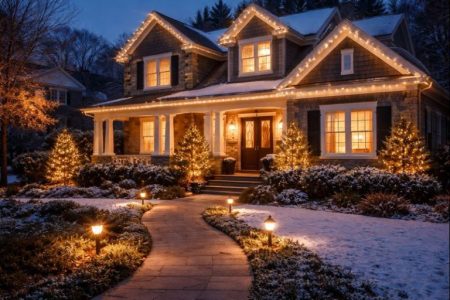Maintaining your roof’s health is crucial for your home’s longevity and safety. Regular roof inspections can detect issues early, preventing costly repairs. Roofing experts recommend bi-annual inspections, especially after severe weather events. A regular check-up can pinpoint problems like loose shingles, leaks, or sagging areas that could lead to more significant issues if not promptly addressed. The longevity and safety of your home are tethered directly to the health of your roof.
A thorough inspection helps identify minor issues before they escalate into significant, expensive problems. Discovering hidden damage early through a building monitoring system ensures you take action immediately, thereby preventing more considerable expenses and stress in the future. Being proactive with inspections is akin to having insurance; promptly addressing minor issues can help prevent more significant issues and costs.
Common Problems Detected During Inspections
During an inspection, professionals look for various types of damage that are common yet often undetected until they become significant issues. Here are some of the most common problems detected:
Broken or Missing Shingles
Shingles may deteriorate or detach as time passes because of harsh weather conditions or old age. The absence of shingles leaves the roof vulnerable to additional harm from water and wind. Strong winds, heavy rains, and hailstorms can significantly batter your roof, removing or damaging shingles. A missing shingle may not appear significant, but it can result in water seeping into the underlayment, leading to decay and other structural problems.
Leaks and Water Damage
Identifying water leaks is a typical problem found during roof inspections. If not monitored, leaks can cause extensive harm, such as mold growth and structural deterioration. Leaks often start small but can increase, seeping into walls, ceilings, and floors, leading to costly repairs. Water infiltration can weaken support structures and create unsafe living conditions, so early detection is vital.
Mold and Mildew Growth
Moisture trapped under the roofing materials can lead to the growth of mold and mildew. These not only damage the roof but can also pose health risks to the inhabitants. In damp conditions, mold and mildew flourish and rapidly propagate once they establish themselves. They can deteriorate roofing materials and even make their way into the home, causing respiratory and other health problems for occupants.
Structural Weaknesses
Weak or sagging areas in the roof structure can indicate serious underlying problems. Identifying these weaknesses early can prevent roof collapses and ensure the home’s safety. Sagging areas often suggest underlying issues like compromised support beams or accumulated weight from debris, leading to catastrophic failures if not remedied promptly.
Gutter Issues
Gutters are essential in diverting water from the roof. Inspectors examine gutters that are obstructed, harmed, or not correctly installed, which can cause water accumulation and harm to the roof. Maintaining well-working gutters can prevent water accumulation on the roof, decreasing the chances of leaks and ice dam formation. Frequent check-ups guarantee that gutters stay unobstructed and efficiently divert water from your house.
The Benefits of Professional Inspections
While some homeowners might inspect their roofs, professional inspections offer significant benefits. Experts have the know-how to spot subtle issues that may be easily overlooked. They bring a trained eye and specialized equipment to the job, ensuring a thorough examination. More importantly, they adhere to stringent safety protocols, reducing the risk of accidents. Hiring a professional can prolong the lifespan of your roofing system. A trained professional can provide detailed insights and recommendations that a layperson may miss, offering peace of mind that your roof is in good condition.
How Often Should You Schedule Inspections?
Having your roof checked twice annually is generally advised: once in the spring and once in the fall. These seasons are great because they come before extreme weather, allowing you to deal with problems before they get serious. Moreover, it is prudent to arrange for inspections following severe weather events to verify no concealed damages. Post-storm inspections are essential to find hidden storm damage that might not be obvious immediately.
DIY Checks Between Professional Inspections
Between professional checkups, homeowners can perform visual inspections from the ground. Look for missing or curled shingles, sagging areas, and visible signs of wear or damage. Regular DIY checks can inform you about your roof’s condition and prompt you to call professionals when necessary. While these checks are not a substitute for professional inspections, they can serve as an early warning system that helps you identify issues before they escalate.
Technology & Roof Inspections
Advances in technology are making roof inspections more efficient and accurate. Drones are increasingly used to access hard-to-reach areas and provide detailed imagery for analysis. These high-tech tools allow inspectors to cover more ground quickly and safely, significantly improving the accuracy and security of roof inspections. Inspectors can take detailed pictures and videos of the roof using drone technology, giving a thorough evaluation without ladders or scaffolding.






